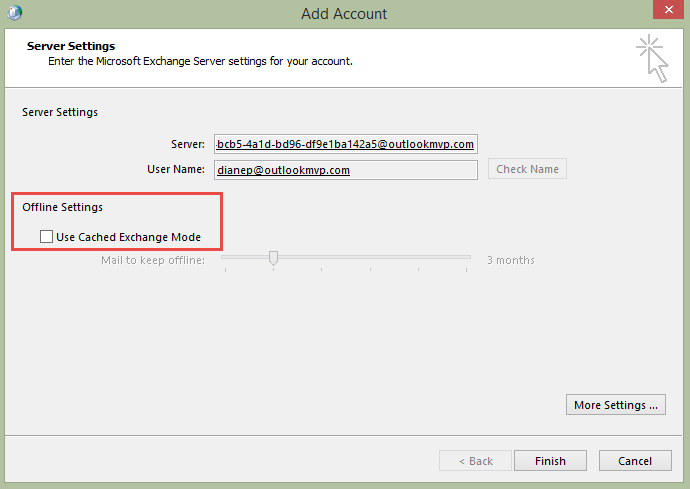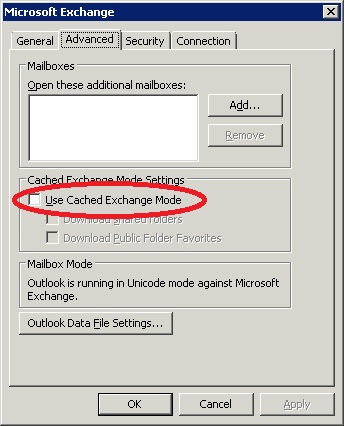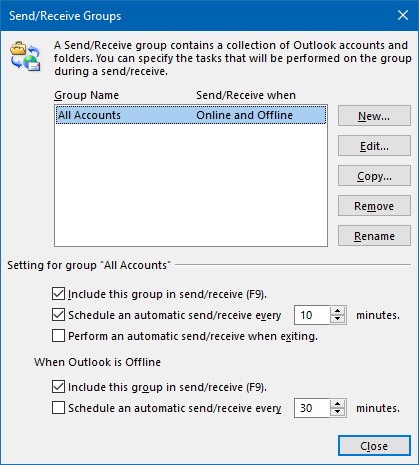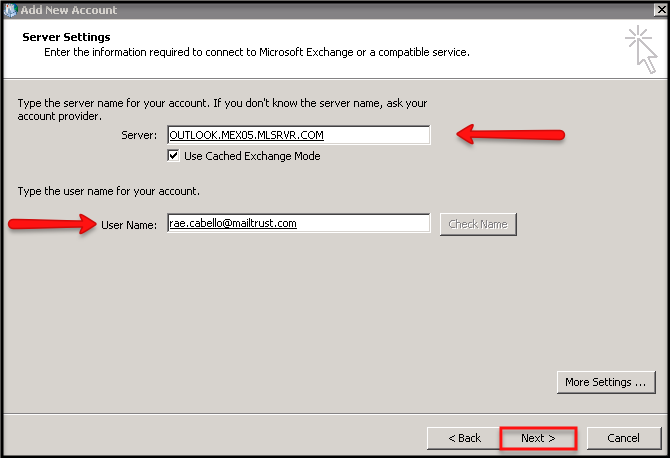

Then you can safely turn off the cached mode and things will work fine. You may also get this “Exchange” error when you don’t even use Microsoft Exchange. Below are the links to turn off Cached Exchange Mode in Outlook 2007, 2010, 20. If you don’t need a local copy cached, then turn this off and you should no longer get the error. This basically stores a local copy of your Exchange mailbox, which is useful on a laptop, but not on a desktop that is always connected. If you are in an office environment and you’re using Exchange with Outlook, then this problem can be caused by something called Cached Exchange Mode.

If not, continue to try the other possible solutions below. It does not apply the sync settings to the new Groups feature as Groups are cached in in a separate data file (account-name.nst).Now go ahead and try to startup Outlook again and see if the issue has gone away. Outlook 2016 applies the sync setting to shared or delegate folders and mailboxes, and public folders that are cached.

When Exchange server users have shared or delegate folders, shared mailboxes, and public folders in a profile, Outlook 2013 caches the contents of these folders in the *.ost file, however, the sync setting does not apply to these folders, and all contents of these folders are stored in the local cache file. Shared or delegated (Outlook 2013 only).

The sync settings do not apply to the following Outlook items. Users will need to use Instant Search or OWA to view older messages. In Outlook 2016, shared mailboxes do not (currently) have the link (or active View on Server button) to view more messages on the server. You can also click the View on Server button on the Folder tab to view messages not synced locally. To view mail that is not synced down, click on " Click here to view more on Microsoft Exchange" at the bottom of the message list. IMAP accounts can synchronize as little as 1 month. In Outlook 2013 or if you open the profile using the Mail Setup dialog (Control Panel > Mail), the dialog will look similar to this:įor Outlook 2013, Exchange accounts can synchronize as little as 1 month, while Exchange accounts (including ) in Outlook 2016 and up can synchronize as little as 3 days of messages. In new versions of Outlook, the dialog looks like this: The default setting is based on the free space available on your hard drive. Slide the control to determine how much older email is stored offline. To check the sync settings, open File, Account Settings dialog and double click on the email account.


 0 kommentar(er)
0 kommentar(er)
